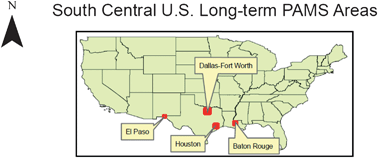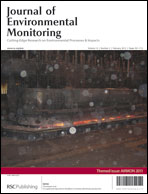Update of long-term trends analysis of ambient 8-hour ozone and precursor monitoring data in the South Central U.S.; encouraging news
Abstract
In the South Central U.S., lower tropospheric ozone pollution continues to be a challenging problem. This paper provides an update on long-term trends analyses of the ambient ozone and precursor monitoring data collected over the past 25 years (1986–2010) in four South Central U.S. cities, following up on a previous published review of 20 year trends (M.E. Sather and K. Cavender, J. Environ. Monit., 2007, 9, 143–150). The results of these analyses should be useful to air quality scientists, managers, planners, and modelers in assessing the effectiveness of


 Please wait while we load your content...
Please wait while we load your content...